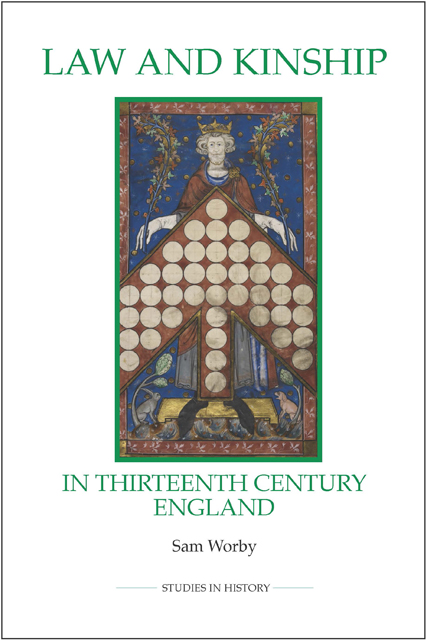Book contents
- Frontmatter
- Contents
- List of illustrations
- List of tables
- Acknowledgements
- Abbreviations
- Introduction
- 1 Canon law kinship structures
- 2 Common law kinship structures
- 3 The dominance of canon law kinship ideas
- 4 Kinship laws in practice
- 5 Trends underlying legal kinship structures
- Conclusion
- Appendices
- Bibliography
- Index
2 - Common law kinship structures
Published online by Cambridge University Press: 01 March 2023
- Frontmatter
- Contents
- List of illustrations
- List of tables
- Acknowledgements
- Abbreviations
- Introduction
- 1 Canon law kinship structures
- 2 Common law kinship structures
- 3 The dominance of canon law kinship ideas
- 4 Kinship laws in practice
- 5 Trends underlying legal kinship structures
- Conclusion
- Appendices
- Bibliography
- Index
Summary
Common law kinship determined inheritance of real property for the wealthy. It both reflected and shaped noble concepts of how the family should be ordered; its symbolic importance hence extended more widely than simply to those whose land descended according to its rules. The common law kinship system, specifically that part that concerned the structure of kinship, was a powerful force in people's lives (some practical matters such as dower or curtesy or bastardy will not be dealt with in detail here). It may seem more natural and instinctive to modern readers than that of the canon law, as the inheritance patterns of the nobility in England are relatively well known in comparison to canon law kinship, yet it was artificial in the way that any formal legal kinship system will inevitably be. The focus of this chapter will be on parentelic kinship, although other kinship systems did operate locally, for example inheritance according to gavelkind in Kent and several other counties.
The common law was the justice of the king's courts: the Common Bench, the King's Bench, in the eyres and such. It was the law that was written about in books of English law like Bracton's De legibus et consuetudinibus Angliaeand argued about by lawyers as the profession emerged. It was that mass of writs, pleas, customs, statutes and common learning that English lawyers regard as the common law. Common law kinship was, for the most part, a matter of inheritance law and disputes about ownership of land or, more accurately, of rights to land. The importance of these rights, and land as a source of wealth and power, can hardly be overstated. There was no allod in England, no complete title as such. Instead, the Conquest meant that, by fact or fiction, men held ultimately from the king. Below the monarch was, in theory at least, the whole panoply of the feudal pyramid, with some men (often more powerful lords) holding land direct from the king, and others holding land from them in subinfeudation down to the people who worked the land at the very bottom. Certain concepts underlie the discussion of kinship.
- Type
- Chapter
- Information
- Law and Kinship in Thirteenth-Century England , pp. 39 - 67Publisher: Boydell & BrewerPrint publication year: 2010

